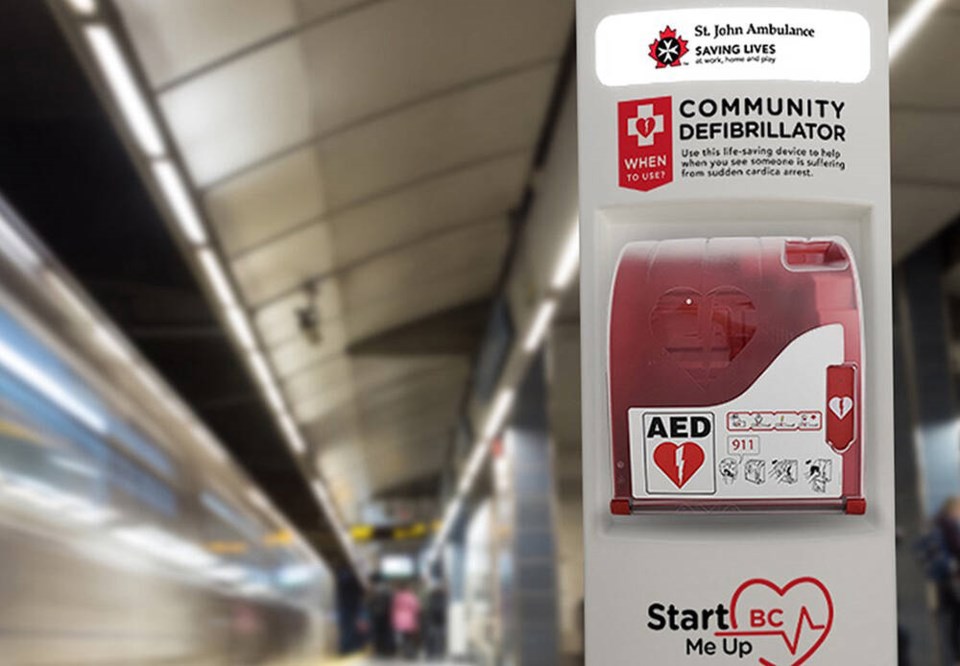Shonna Leung remembers exactly what song was playing when her partner suddenly collapsed at the Gorge Road pub where they were dancing with friends.
It was the Miley Cyrus hit Flowers.
“When my partner turned to go back to her seat, it seemed as though she had tripped because she suddenly fell backwards hitting her head on the floor,” said Leung. “I just couldn’t believe it.”
The band at the Loft Pub that night, the Groove Diggers, stopped the music.
“I rushed to her and found she was unconscious,” said Leung, who screamed for someone to call 911.
Despite knowing CPR and being the type of person who carries the opioid-overdose-reversing drug naloxone in her car to help strangers — as she had earlier that evening by the B.C. legislature — Leung was almost frozen by fear and anxiety.
At that moment, a calm man knelt beside the group, took the 58-year-old woman’s pulse, and explained he was an off-duty paramedic and was going to start CPR, asking if Leung could assist with rescue breaths.
When the ambulance arrived, it took several shocks from an automated external defibrillator or AED to get her partner’s heart in rhythm before she was rushed to hospital.
“This kind and gentle man — named Kyle — saved her life that evening,” said Leung. “Things would probably have turned out a lot differently if he had not been there. He kept her heart going.”
Leung not only wants to publicly thank Kyle and all paramedics for their lifesaving work, but to call for more CPR training and recertification courses for the public and in schools, and to encourage all venues to be equipped with AED machines.
“AED machines and CPR training save lives,” said Leung, who called her partner “the healthiest woman around,” saying there were no warning signs that she would go into cardiac arrest on that Easter weekend night.
“The last thing I thought would be that she would have any kind of health issue,” said Leung.
“I’m the one with high blood pressure. I’m the one who has to watch her cholesterol.”
Leung said her partner had a heart attack caused by left main coronary artery, which provides 50 per cent of the heart muscle’s blood supply. That kind of heart attack has been coined a “widow maker” given the low survival rate if it happens outside of hospital.
Cardiologist Dr. Elizabeth Swiggum, a heart-failure specialist and medical director of the Heart Function Clinic and Cardiac Rehabilitation program at Royal Jubilee Hospital, said there are different strategies for increasing the number of people who can perform CPR confidently.
Most successful programs that aim to share a skill go out into the community “where people are” and set up displays, offering a variety of low-pressure environments “for people to get their hands on a CPR dummy and try it out,” for example.
Swiggum said she’s seen this done at conferences, in public spaces and even at an airport.
CPR can also be taught through the public education system, as part of the high school physical education or life skills curriculum, for example, she said.
In the wake of the January fentanyl-poisoning death of first-year University of Victoria student Sidney McIntyre-Starko, there have been calls for mandatory CPR training in high schools, as is done in other provinces, including Ontario, Quebec and Alberta.
“I think the school is a great environment because we’re definitely capturing a lot of young people and you can repeat it over and over again [throughout various grades],” said Swiggum.
It’s important to ensure more people feel empowered to perform CPR, and to act in a situation where it’s important to act fast, said Swiggum, who stresses that performing CPR, simultaneously calling 911, and recruiting bystanders to help are three key steps.
Often, 911 call-takers can instruct callers on how to deliver life-saving care until paramedics arrive, she said.
“When people have quick access to CPR and AED, their outcomes are much more favourable and their ability to survive that cardiac arrest is exponentially improved by quick attention.”
• Search the Canadian Red Cross website () for CPR/AED courses near you through the summer.
Note to readers: This story has been updated to clarify some of the details around the woman's heart attack.
>>> To comment on this article, write a letter to the editor: [email protected]




